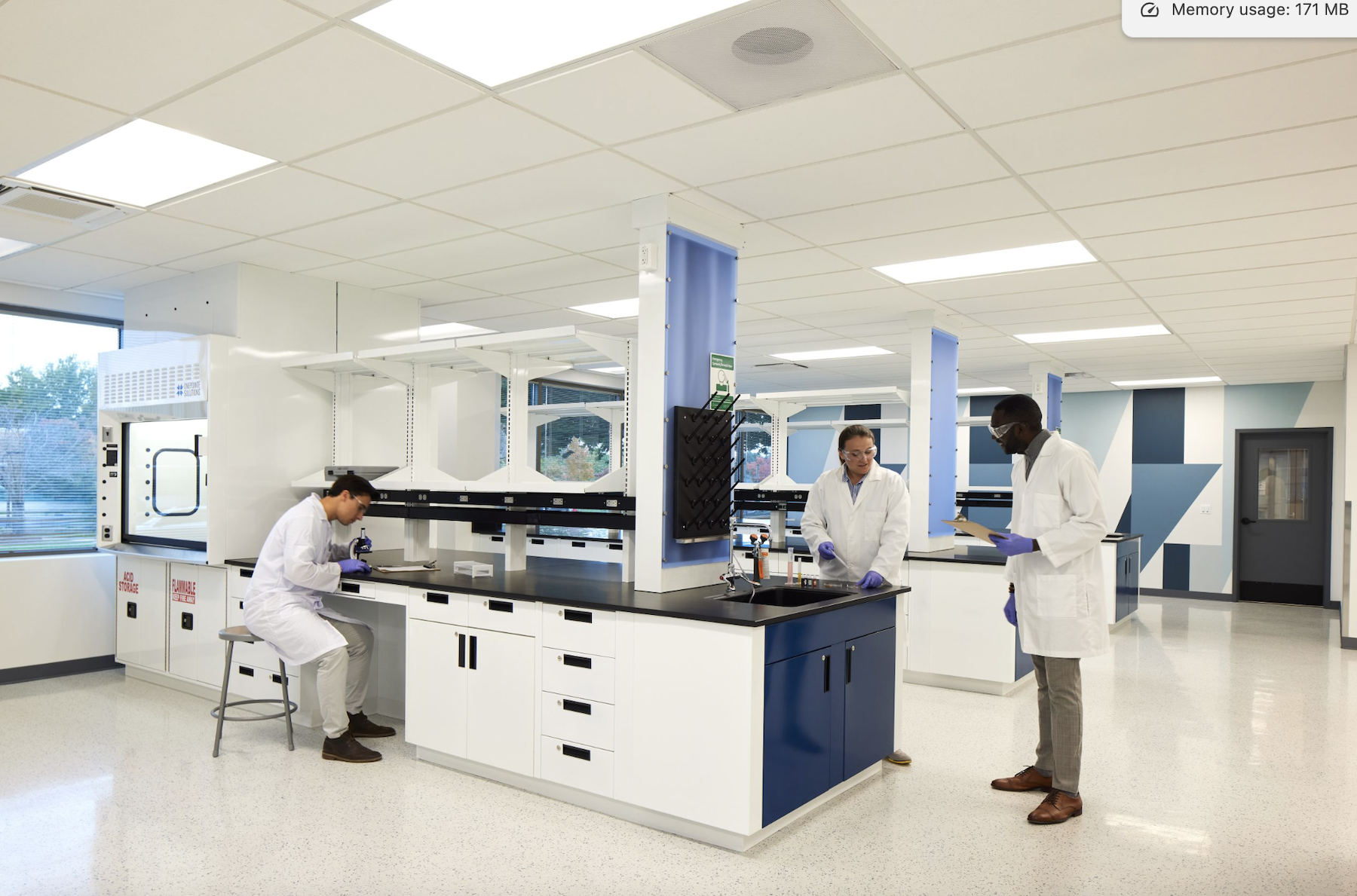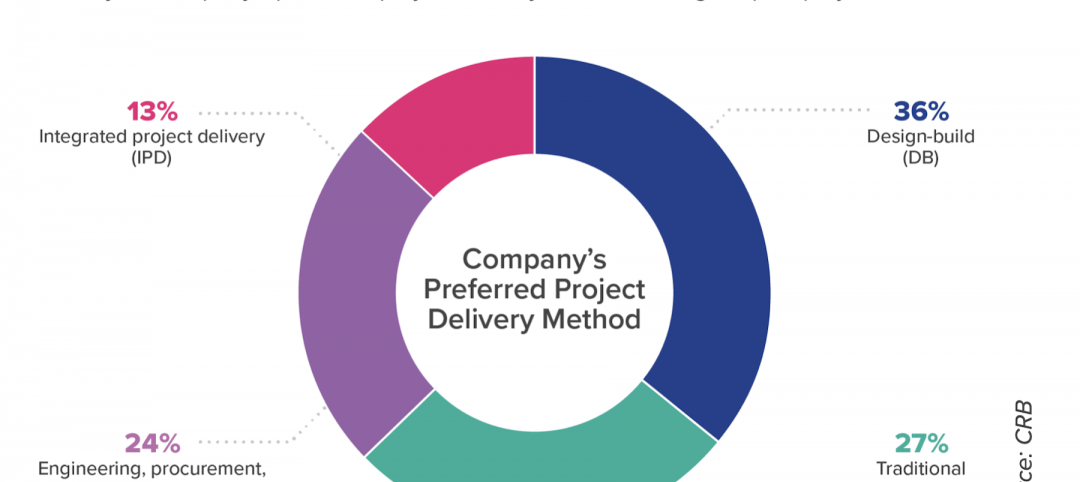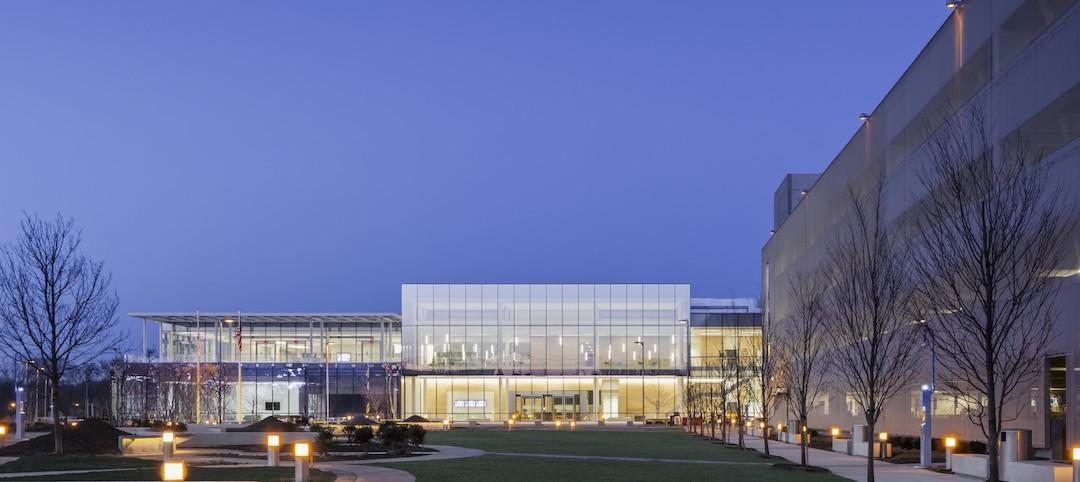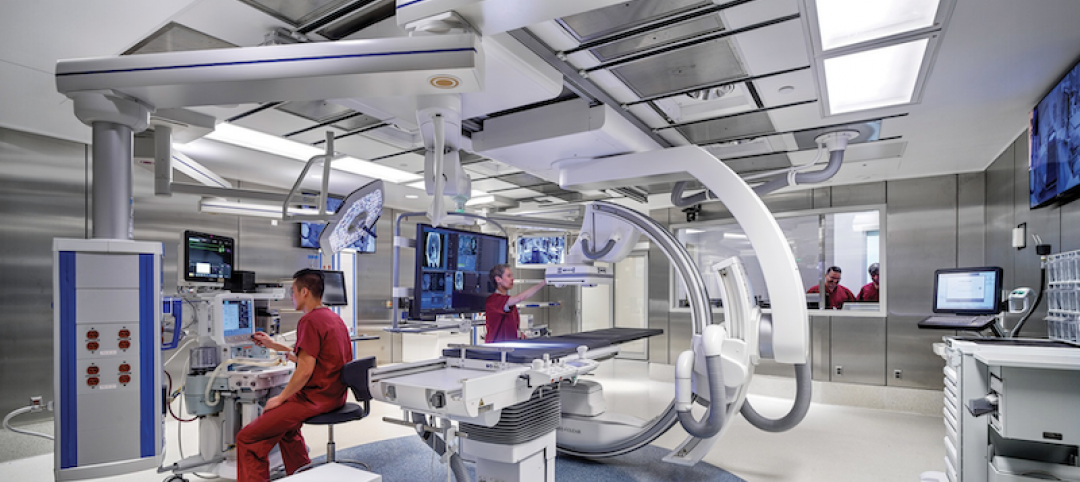With demand for lab-based research increasing, the redevelopment of vacant office space for life science applications has been gaining traction. Last May, for example, CBRE estimated that half of the 125 office conversion projects that were underway then were being adapted for life-science use.
Among the recent conversions are two office buildings, 32,000 and 52,000 sf, within the Rock Creek Property Group-owned Precision Labs campus in Germantown, Md., that have been made into a cGMP-ready white box facility and a state-of-the-art lab, respectively.
Ware Malcomb’s science & technology group, working in tandem with the firm’s interior architecture and design and site planning studios, completed this adaptive reuse project last June with the general contractor Coakley & Williams Construction, the MEP engineer CFR Engineering, and the CE VIKA-MD. Rock Creek Property, the project developer, retained the services of Facility Logix as the subject matter expert. (Ware Malcomb disclosed information about the project last month.)
Office onversions focus on MEP upgrades
To convert these office buildings into move-in ready speculative BSL-2 labs, the building team focused on enhancements to their electrical, mechanical, and wastewater infrastructure within the context of the site’s original zoning.
The single-story 20430 Century Boulevard building (the white box conversion) was reimagined to accommodate a full-building headquarters with 20-ft clear heights, 30x40-ft column spacing, five loading docks, and optimal utility services and floor load capacity. The upgraded utilities provide tenants with full autonomy to customize the space as needed.
The two-level 20440 Century Boulevard building (the lab) was transformed into a multi-tenant life science office/lab space with six BioSafety Level 2 wet lab suites ranging from 2,500 to 7,500 sf with 15-ft clear heights and modern mechanical systems.
According to Ware Malcomb, the building team considered sustainability measures that would control costs and minimize construction waste. These included maintaining existing suite demarcations and lighting fixture locations, and reusing air handing and other mechanical equipment. The team installed new energy efficient LED lighting, and GreenSpec- and Watersense-licensed plumbing fixtures. Also installed were a high efficiency energy recovery variable refrigerant flow system for heating and cooling, and a building automation system to control and monitor the HVAC equipment.
“The project exemplifies innovation, flexible design, and creative repositioning,” said Lori Ambrusch, Ware Malcomb’s Director of Science & Technology, in a prepared statement. The cost of the conversions was not disclosed.
Last June, for the website LabDesign News, Ambrusch co-authored, with CFR’s Vice President Jason Sambolt, an article that addressed design and engineering considerations for office-to-lab conversions. The article points out, for example, that there is a better chance of the building’s existing electrical service being adequate if there is not a need for a large amount of lab equipment, and the building has a natural-gas service. If an electrical service upgrade is required, building teams must account for extended distribution lead times for switchgears (up to 52 weeks at the time of the article’s publication), as well as the fact that larger switchgears will decrease rentable square footage.
Related Stories
Giants 400 | Dec 31, 2021
2021 Science and Technology Sector Giants: Top architecture, engineering, and construction firms in the U.S. S+T facilities sector
HDR, CRB, Jacobs, Skanska USA, and Whiting-Turner Contracting Co. top the rankings of the nation's largest science and technology (S+T) sector architecture, engineering, and construction firms, as reported in the 2021 Giants 400 Report.
Laboratories | Nov 18, 2021
Tapping into the life sciences building boom
Paul Ferro of Form4 Architecture discusses how developers are pivoting to the life sciences sector, and what that means for construction and adaptive reuse.
2021 Building Team Awards | Nov 17, 2021
Caltech's new neuroscience building unites scientists, engineers to master the human brain
The Tianqiao and Chrissy Chen Institute for Neuroscience at the California Institute of Technology in Pasadena wins a Gold Award in BD+C's 2021 Building Team Awards.
Laboratories | Nov 17, 2021
New report finds a biopharma industry being reshaped by disruption
Industry respondents to CRB’s survey weigh in on project delivery, digitization, and off-site manufacturing for life sciences construction.
Laboratories | Oct 14, 2021
‘Next-generation’ Quest Diagnostics lab unveiled in New Jersey
Mark Cavagnero Associates designed the project.
Laboratories | Aug 31, 2021
Pandemic puts science and technology facilities at center stage
Expanding demand for labs and life science space is spurring new construction and improvements in existing buildings.
Giants 400 | Aug 30, 2021
2021 Giants 400 Report: Ranking the largest architecture, engineering, and construction firms in the U.S.
The 2021 Giants 400 Report includes more than 130 rankings across 25 building sectors and specialty categories.
Laboratories | Aug 30, 2021
Science in the sky: Designing high-rise research labs
Recognizing the inherent socioeconomic and environmental benefits of high-density design, research corporations have boldly embraced high-rise research labs.
Laboratories | Aug 25, 2021
Lab design strategies for renovations and adaptive reuse
Lab design experts in HOK’s Science + Technology group outline the challenges organizations must understand before renovating a lab or converting an existing building into research space.
Architects | Aug 5, 2021
Lord Aeck Sargent's post-Katerra future, with LAS President Joe Greco
After three years under the ownership of Katerra, which closed its North American operations last May, the architecture firm Lord Aeck Sargent is re-establishing itself as an independent company, with an eye toward strengthening its eight practices and regional presence in the U.S.

















